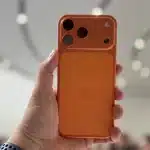Synchron, a leading brain-computer interface (BCI) company, has announced a groundbreaking integration of its technology with Apple’s Vision Pro. This marks the world’s first use of the Apple Vision Pro controlled through an implantable brain-computer interface. A 64-year-old ALS patient in the United States successfully used his thoughts to operate the Vision Pro, highlighting a significant advancement in accessibility technology.
Revolutionizing Interaction for ALS Patients
Mark, the patient, managed to play Solitaire, watch Apple TV, and send text messages using the Synchron BCI, all without using his hands or voice. This achievement is particularly impactful for individuals like Mark, who have lost the use of their upper limbs due to conditions like ALS. “This is pretty cool,” Mark said. “Using this type of enhanced reality is so impactful and can transport you to places you never thought you’d see or experience again.”

How the Integration Works
The Apple Vision Pro, a revolutionary spatial computer, traditionally requires hand gestures for control. However, with Synchron’s BCI, brain-controlled commands replace these gestures, enabling hands-free and voice-free operation. The BCI system, implanted through a minimally-invasive endovascular procedure, detects motor intent from the brain and wirelessly transmits these signals to the device.
Synchron’s BCI is designed to be user-friendly and easy to learn. It integrates seamlessly with the Vision Pro, allowing individuals with severe paralysis to engage with digital devices in ways previously thought impossible. This integration underscores Synchron’s commitment to patient-first innovation in neurotechnology.
Vision Pro: A New Frontier in Digital Interaction
Apple Vision Pro combines digital content with the physical world, creating an infinite canvas for apps that scale beyond traditional displays. The device uses the most natural inputs—eyes, hands, and voice—to control a three-dimensional user interface. Synchron’s BCI expands this control method by incorporating direct brain signals, broadening the accessibility of this advanced technology.
Synchron CEO Tom Oxley emphasized the importance of this development. “We are moving towards a new Bluetooth standard for Human Computer Interactions that don’t require touch or speech,” he said. “This is a critical unmet need for millions of people with paralysis.”
Future Implications
This integration sets a new standard for accessibility in consumer technology. It opens up numerous possibilities for individuals with disabilities, allowing them to interact with advanced devices in more meaningful ways. Synchron’s work with Apple Vision Pro could pave the way for broader applications of BCIs in everyday technology.
The successful integration of Synchron’s brain-computer interface with Apple Vision Pro marks a significant leap forward in making advanced technology accessible to all. This pioneering development not only enhances the lives of individuals with paralysis but also sets the stage for future innovations in human-computer interaction.












